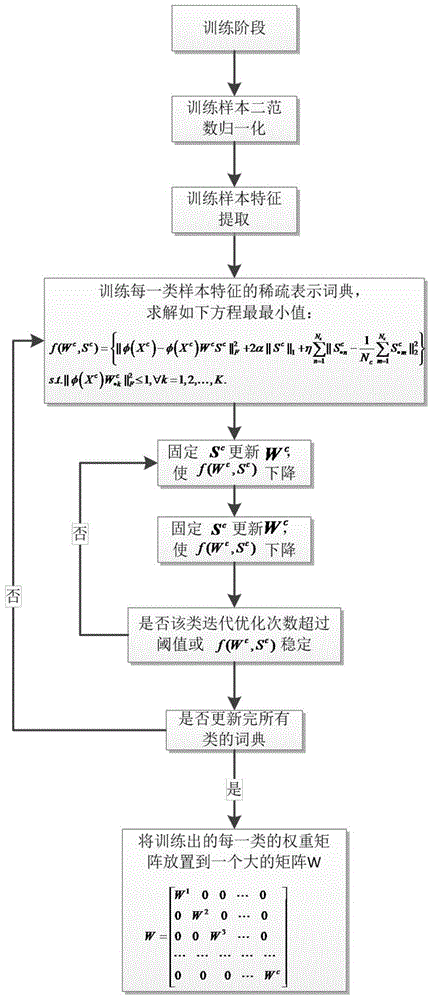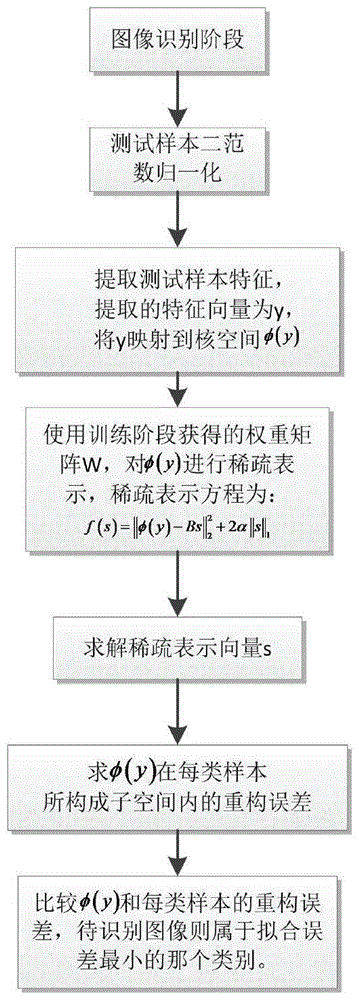Classification and aggregation sparse representation face identification method based on nuclear space
A sparse representation and face recognition technology, which is applied in the field of face recognition with sparse representation of classification and aggregation, and can solve the problems of large fitting error and low accuracy.
- Summary
- Abstract
- Description
- Claims
- Application Information
AI Technical Summary
Problems solved by technology
Method used
Image
Examples
Embodiment Construction
[0071] The present invention will be further described below in conjunction with the accompanying drawings.
[0072] A face recognition method based on classification clustering sparse representation of kernel space, comprising the following steps:
[0073] Step 1: Use convolutional neural network to extract face features from face images. In this embodiment, the VGG model (Deepface recognition, O.M. Parkhiand A. Vedaldian and A. Zisserman, Deep Face Recognition, Proceeding of the British Machine Vision Conference (BMVC), 2015) is selected. First, change the size of the face image to 224×224, and then call the VGG model to obtain the features of the face image.
[0074] Step 2: Training classification aggregation dictionary, the training steps are:
[0075] (1) Input training sample, adopt the picture sample training classification dictionary that comprises C kinds, training sample space is represented by X, expresses as X=[X 1 ,X 2 ,...,X c ,...,X C ]∈R D×N , D represe...
PUM
 Login to View More
Login to View More Abstract
Description
Claims
Application Information
 Login to View More
Login to View More - R&D
- Intellectual Property
- Life Sciences
- Materials
- Tech Scout
- Unparalleled Data Quality
- Higher Quality Content
- 60% Fewer Hallucinations
Browse by: Latest US Patents, China's latest patents, Technical Efficacy Thesaurus, Application Domain, Technology Topic, Popular Technical Reports.
© 2025 PatSnap. All rights reserved.Legal|Privacy policy|Modern Slavery Act Transparency Statement|Sitemap|About US| Contact US: help@patsnap.com



